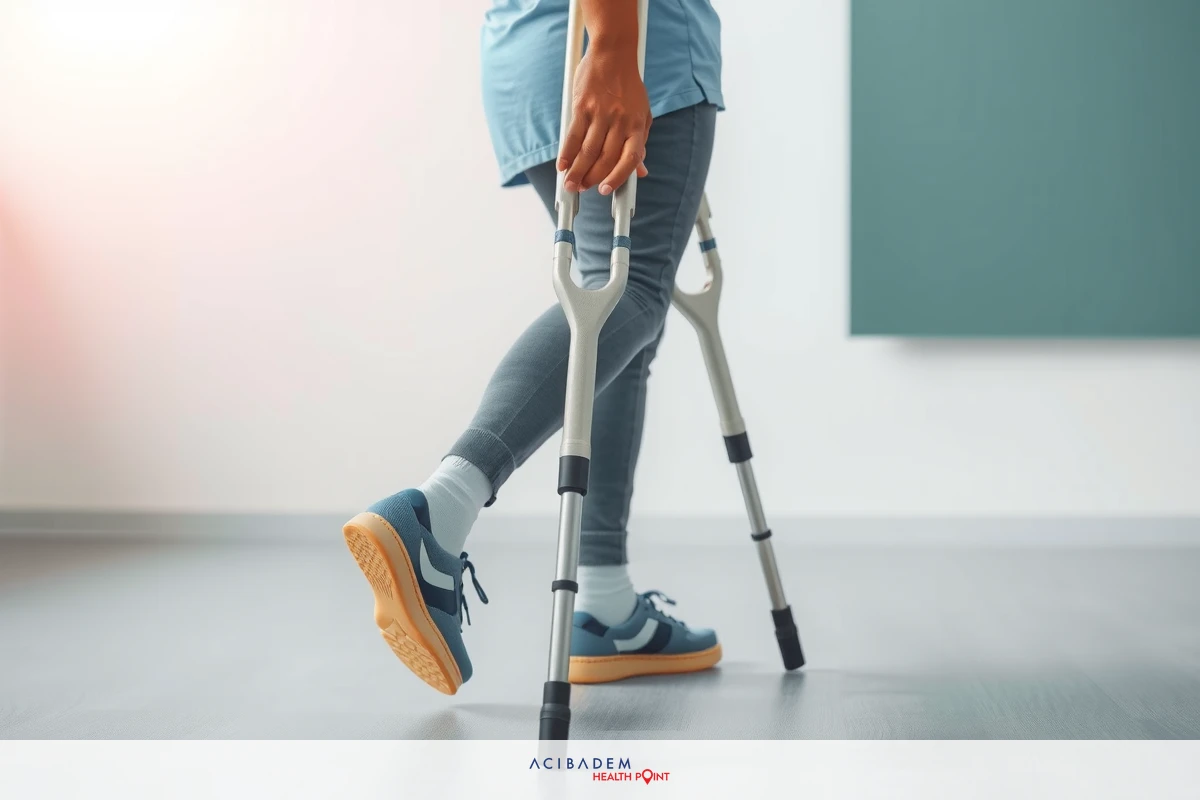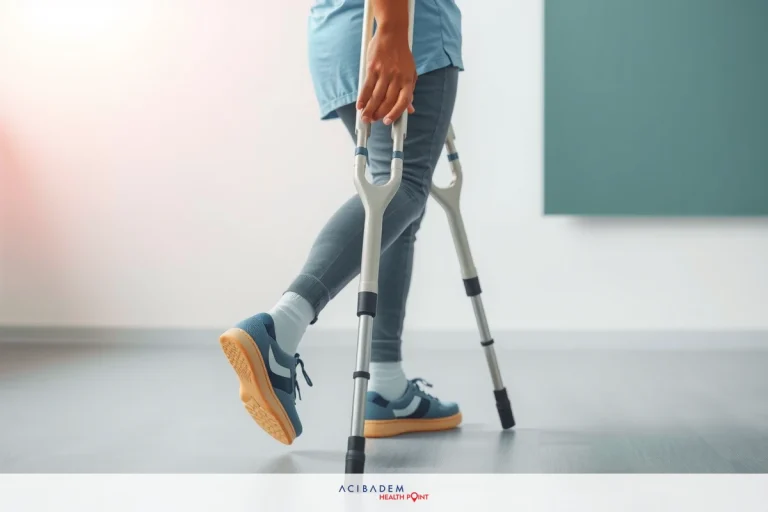How to Walk with Crutches After Knee Replacement
How to Walk with Crutches After Knee Replacement Walking after a knee replacement can feel like a new chapter. It’s important to get it right from the start. The first step is learning how to use crutches. They give support and help you move about safely. Your long-term success depends on good technique.
Using crutches might seem hard at first but don’t worry. With time and practice you’ll get the hang of it. This guide aims to make the process easier for you. We will go through each stage carefully ensuring you have all the tools for your journey ahead.
Remember that walking with crutches is part of getting better. Take it slow and listen to your body as you go along this path. Ask for help when needed and trust in your ability to adapt over time. Soon moving around will become more natural again.
Choosing the Right Crutches
Picking the right crutches is key after a knee replacement. They need to match your body size and weight. This ensures they can support you as you walk with crutches. The height of the crutches must be just right not too tall or short. Proper fit prevents strain on your arms and shoulders.
When looking for crutches comfort is vital. Check that the pads feel soft where they rest under your arms. Make sure grips are easy to hold and don’t hurt your hands during use. This will help you move better and make walking less tiring.
Adjusting them correctly boosts mobility and helps in rehabilitation. Your elbow should bend a bit when you hold onto the grips while standing straight up; about 15 degrees is good advice to follow here. The top of each one should not press hard into your armpits but rather stay an inch or two below.
Lastly think about how often and where you’ll use them. Indoors might mean smaller tips for grip while outdoors could require broader ones for stability. Ask a therapist if unsure which kind suits best for daily tasks. They can show how to adjust settings so that each step aids healing without extra pain or risk of falling over.
Getting Started with Crutches
Before you start walking standing up safely is the first thing to learn. Place your crutches by your side and use a steady chair to rise from. Lean forward slightly and push up using the strength of your arms. As you stand keep the surgery leg off the ground at first. Ensure that both crutches are firmly on the floor for stability before trying to move.
Finding balance on your crutches takes practice after knee replacement surgery. Begin by positioning them about one foot in front of you while keeping feet flat on the ground. Shift weight gradually from legs to hands as you get ready to step forward. Keep a straight posture; it helps maintain good balance. Do small shifts in weight at first until confidence grows.
When taking those initial steps focus on technique over distance. Move each crutch ahead one at a time then follow through with your strong leg. Let your weaker leg trail behind gently without bearing much weight. This sequence—crutch, strong leg, weak leg—keeps movement smooth and gives better control.
As these basic steps become easier aim for an even rhythm in walking. With every step remember: safety comes before speed during rehabilitation. Consistent pace aids mobility more than trying to walk fast right away does. Allow muscles time to adapt and strengthen as part of recovery from knee replacement surgery.
Proper Technique for Walking
Good posture is the cornerstone of walking with crutches after a knee replacement. Stand up tall and hold your head high, looking forward, not down at your feet. Shoulders should be relaxed but straight not hunched over or rolled back too far. Your arms will do most of the work so let them carry your weight as you move.
As you walk with crutches remember to keep movements smooth and steady. Place the tips of your crutches a short distance ahead in line with each step you take. Lean slightly forward and press down on the handgrips as you step through with your good leg. The goal is to create a rhythm that feels natural and supports mobility without straining any part of your body.
Every step counts towards progress in rehabilitation from knee surgery. Take it slow; there’s no rush. Your main aim is to build confidence while moving around safely. If pain flares up or balance wavers pause where you are. Take a moment to reset before trying again. Soon enough these techniques will become second nature in everyday life activities!

Building Strength and Endurance
Gaining strength after a knee replacement is vital for long-term mobility. Start with simple exercises that can be done while seated such as ankle pumps and thigh squeezes. These movements help blood flow and muscle tone without putting stress on your new joint. Aim to do these several times throughout the day to build up endurance gradually.
As you grow stronger standing exercises become key in your routine. Use crutches for support while doing gentle knee bends or leg lifts. These activities enhance stability by working the muscles around your knee. Always keep movements slow and controlled; it’s not about speed but about building solid strength.
Balance exercises are next on the path to better mobility. Practice shifting weight from side to side with crutch support holding each position briefly. This trains your body to trust in its ability to stay upright even when moving around obstacles or uneven ground.
Incorporating walking into daily life also boosts stamina over time. Short walks inside the house can slowly extend outside as confidence grows. Remember consistency matters more than distance at first; frequent short walks are better than occasional long ones.
Lastly follow guidance from a physical therapist closely during this phase of rehabilitation. They will provide tailored advice on how much exercise is right for you at each stage of recovery. Under professional care you’ll see gradual yet clear improvements in both strength and endurance as days pass by using crutches post- knee surgery.
Managing Discomfort and Challenges
Discomfort is common when you start to walk with crutches after a knee replacement. To manage it take breaks as needed and avoid overdoing activities. Use ice on your knee to reduce swelling and pain after exercise. Keep the leg elevated when sitting to help decrease discomfort too.
When facing stairs approach them with caution and a plan. Lead up the stairs with your good leg then bring up the crutch along with the operated leg. Going down place the crutches on the lower step first before stepping down with your operated leg. Take one step at a time; there’s no need to rush this process.
Walking on uneven ground can be tricky but not impossible. Scan ahead for potential obstacles like loose stones or high thresholds that might throw off balance. Adjust your grip strength and use more arm control to navigate these areas safely.
Sometimes even just standing still can bring challenges like fatigue in arms or shoulders from bearing weight. Shift slightly from side to side now and then if you need relief during long periods of standing.
Lastly stay in touch with healthcare providers about any persistent issues or new pains while using crutches. They can offer advice tailored specifically for you which may include adjusting how you use your crutches or adding supportive devices for extra comfort during rehabilitation. With their guidance walking will become easier each day despite initial discomforts or hurdles encountered along the way.
Frequently Asked Questions
How long after knee replacement surgery will I need to use crutches?
The time varies for each person but it's often several weeks. Your doctor will give you a plan based on your progress.
Can I walk without crutches if I feel strong enough?
It's best to follow the advice of your healthcare provider. Walking too soon without crutches may harm recovery.
Will my insurance cover the cost of crutches or other mobility aids?
Coverage depends on your specific insurance plan. Contact your insurer for details about what is included in your coverage.








